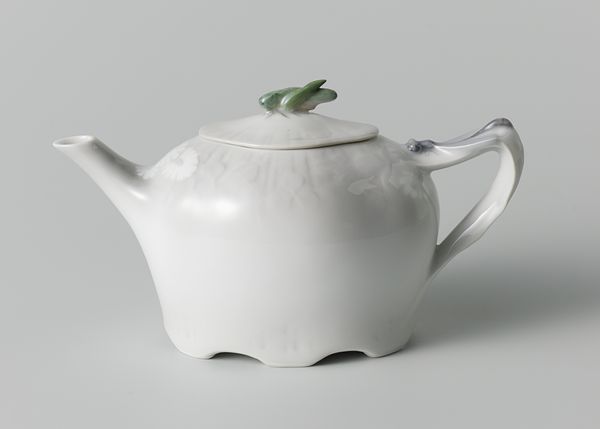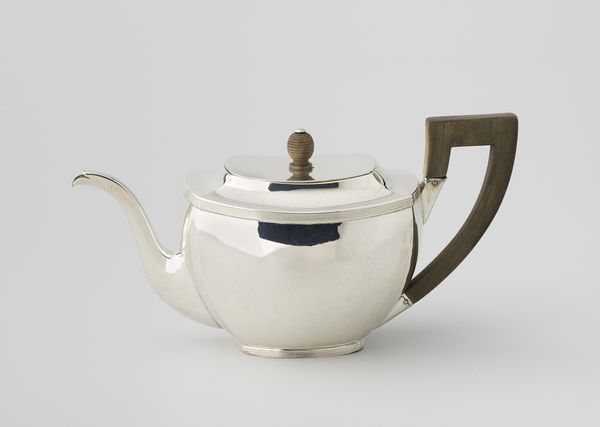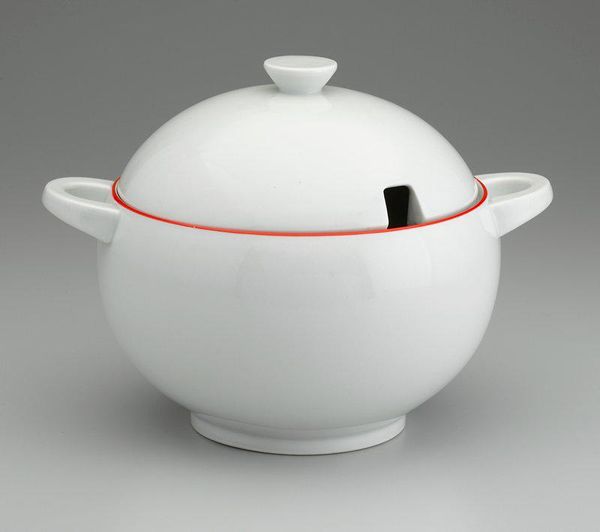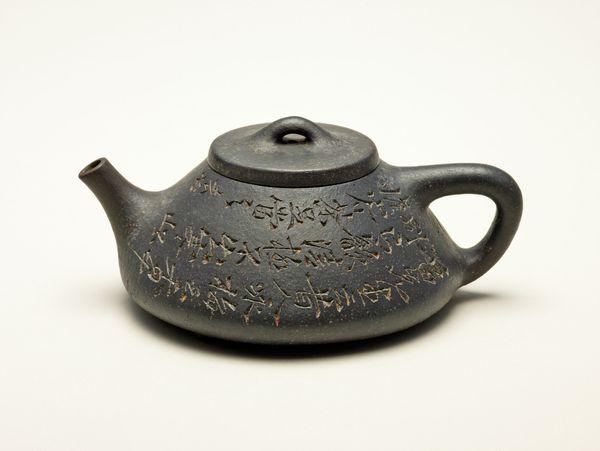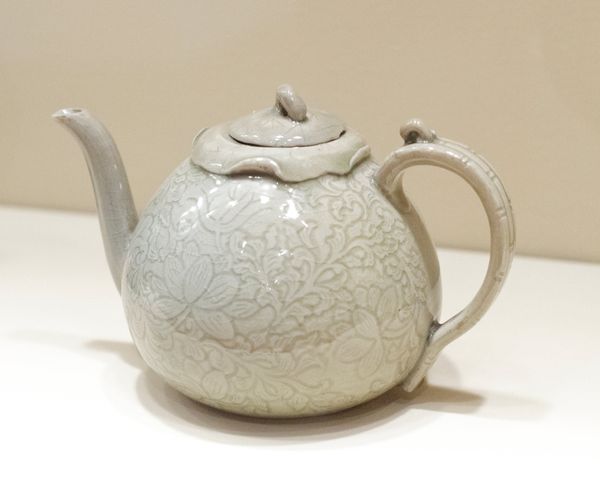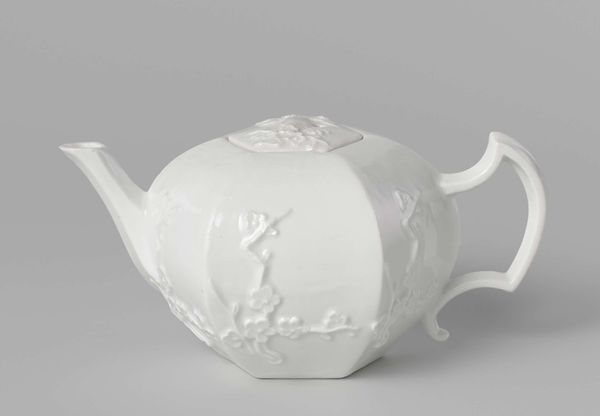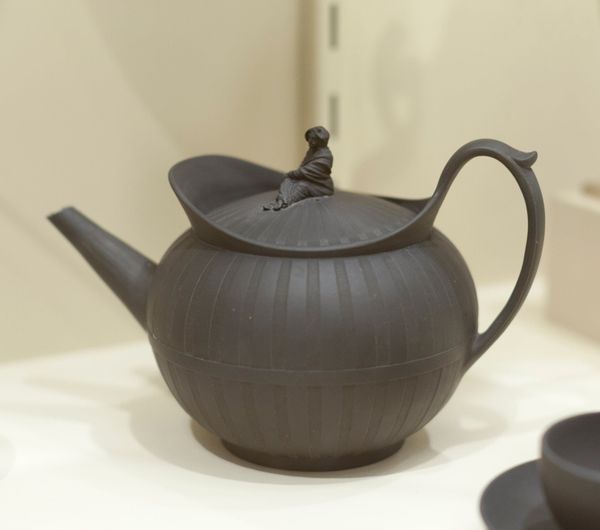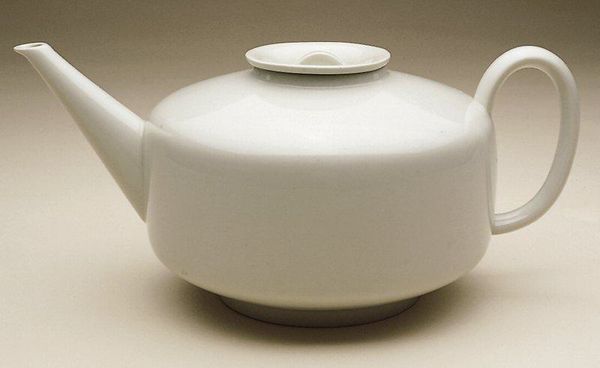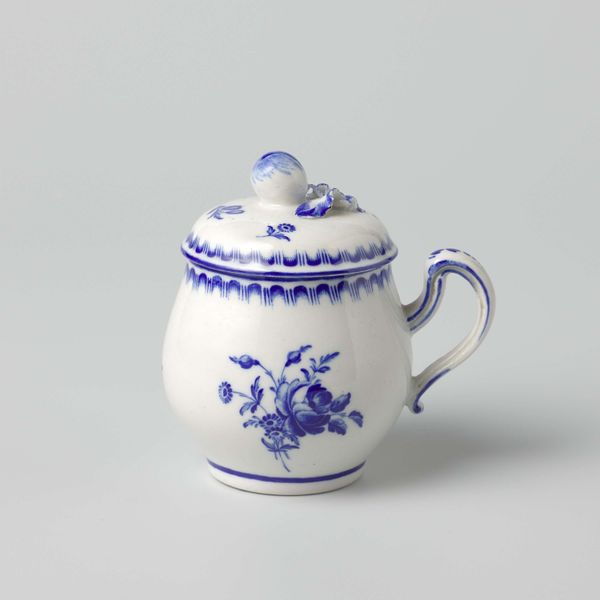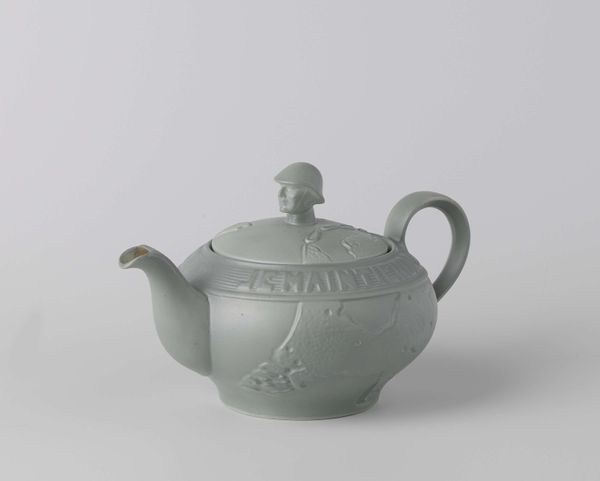
ceramic
#
asian-art
#
ceramic
#
china
Copyright: Public Domain
This miniature teapot was made by Liu P’ei, and its unglazed stoneware surface invites a close look at the relation between art and everyday life in China. The material itself speaks to the country's rich geological resources and its long history of ceramic production. The small size and simple design reflect the importance of tea culture. In China, tea is not just a beverage; it symbolizes respect, humility, and harmony. The inscriptions that decorate its surface are an intriguing visual code. Perhaps these inscriptions relate to the kind of tea that was brewed, or the people who consumed it. To fully understand the teapot's meaning and function, we need to consider its historical context. By researching the social history of tea drinking in China, we can gain a deeper appreciation for the cultural significance of this seemingly simple object. Ultimately, the teapot reminds us that art is not created in a vacuum. It is a product of social, cultural, and economic forces, and it reflects the values and beliefs of the people who create and use it.
Comments
minneapolisinstituteofart almost 2 years ago
⋮
This miniature stoneware teapot is of the classic brick-red color associated with I-hsing ware. A brief poetic line engraved before firing reads: One spoonful of talent fills eight pecks.followed by the engraved sinature of Liu P'ei. Under the base is impressed a potter's seal of Chih-yuu which might possibly be an art name of Liu P'ei. Inside the lid is a standard mark, commonly used on small teapots shui-p'ing indicating that the tip of the spout and the teapots rim are level so the lid will sit flat across them, a standard position indicating the pot is empty.
Join the conversation
Join millions of artists and users on Artera today and experience the ultimate creative platform.
